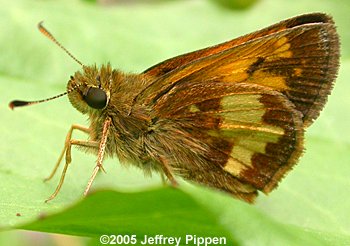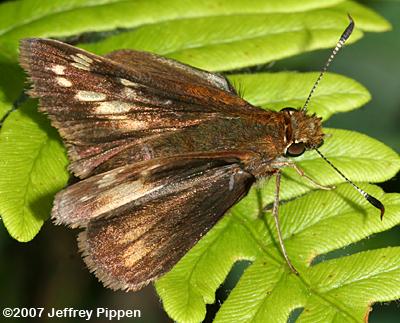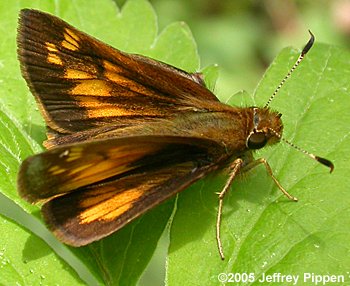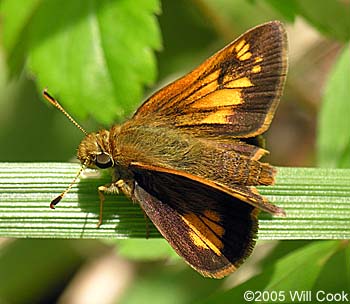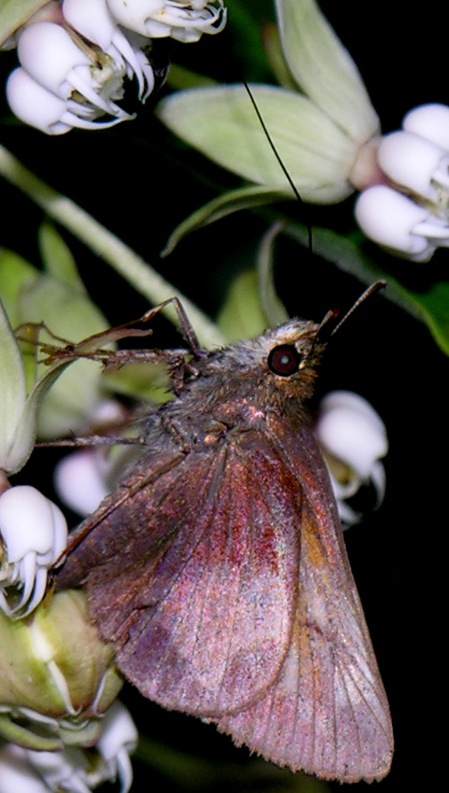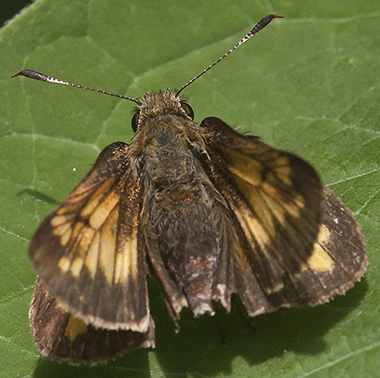|
| Common Name | Hobomok Skipper by Sven Halling => Watauga County
[View PDF]
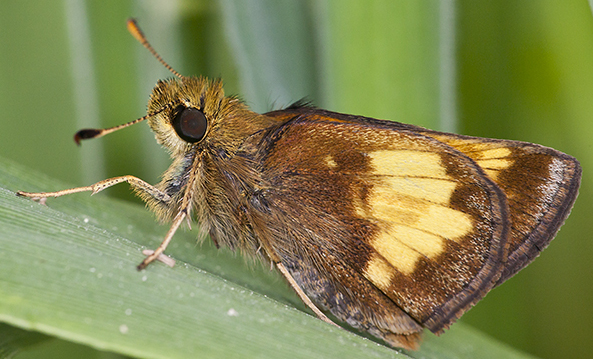 Click to enlarge Click to enlarge
[Google Images] GBIF [Global Distribution ] BoA [Images ] iNaturalist |
| Scientific Name | Lon hobomok
|
| Link to BAMONA species account. |
| Map | Click on a county for list of all database records for the species in that county.
 |
| Distribution | DISTRIBUTION: Throughout the Mountains; scattered in the western Piedmont, where found mostly in foothill ranges. Ranges into the central and eastern Piedmont only in the northern counties, east to Rockingham (added in 2014) and Orange.
|
| Abundance | ABUNDANCE: Declining in numbers in the past few years, for unknown reasons. The scarcity of recent records might simply reflect poor coverage of its habitats in the Mountains, especially in the northern counties -- but numbers are reduced in places where observers found them more commonly in earlier years. Still fairly common and widespread in the Mountains (at least formerly); locally common in some areas in the northern Mountains. Rare in the extreme western and northern Piedmont, but likely absent from the southeastern 60-70% of the province. The species does, however, occur south to the Atlanta, GA, area; thus, it is expected to be found in other Piedmont counties in NC (and SC).
|
| Flight | FLIGHT PERIOD: A single brood; in the Piedmont it flies from the end of April at least to late May (and probably into early June in the foothills). However, in the Mountains the flight occurs from the latter half of April to mid-July.
|
| Habitat | HABITAT: This species favors woodland edges and wide openings in woods (such as margins of logging roads), both where somewhat damp or in uplands, mostly over 3000 feet in elevation and more so above 3500 feet. It can be found in old fields and other brushy areas, but it usually remains fairly close to woods. Some references indicate that it is usually found in damp places, but in NC it has a wide range of moisture tolerance, from bog edges to the margins of sunlit logging roads on the upper slopes of mountains.
|
| Plants | FOOD AND NECTAR PLANTS: Panicgrasses (Coleataenia = Panicum spp.) and bluegrasses (Poa spp.) are among the many foodplants; all foodplants are grasses. The species nectars on many flowers, but males are often seen perched on leaves along wooded edges, where they are quite territorial.
|
| Comments | COMMENTS: This is by no means a scarce butterfly in the Mountains, but sadly, few people are exploring areas where this species occurs or can be found. The scarcity of sightings from 2017-2023 is disturbing, not so much for an apparent decline but it says that few people are roaming the higher elevations of the Mountains anymore. The species can easily be confused with Zabulon Skipper. The main difficulty in identification is the Hobomok's and the Zabulon's insistence on perching with the wings partly spread, making viewing of the crucial field marks on the lower hind wing very frustrating. In addition, the two species occur in similar habitats in the Mountains, such as the edge of hardwood forests along road margins. It is not found in damp habitats as much as the Zabulon Skipper.
I was stunned to find single individuals at two sites in Eno River State Park, Orange County, in May 2004. This county has been well-worked in the past, as has the park. One was inside an upland forest, and the second was in an upland powerline clearing; the similar Zabulon Skipper tends to occur in and near wetland woods, but it also was seen in the same powerline clearing, for comparison.
|
State Rank | S4 | | State Status | |
Global Rank | G5 | | Federal Status | |
| Synonym | Poanes hobomok
|
| Other Name |
|
|
|

 >>
>>